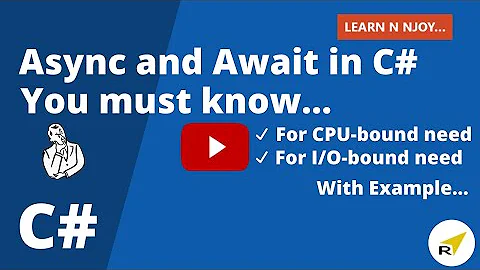How to distinguish between I/O bound and CPU bound jobs ?
Solution 1
Generally, the CPU scheduler assigns time slices to processes/threads and switches between them whenever a) the time slice has run out or b) the process/thread blocks for I/O.
An I/O-bound job will be blocking for I/O very often, while a process/thread that always makes use of his full time slice can be assumed to be CPU-bound. So by distinguishing whether a process/thread blocks at the end of the time slice or by calling some wait_for_io_completion() function, you can effectively characterize those types of processes.
Note, that in real life, things get more complicated, because most of the time applications are not either I/O-bound or CPU-bound but switch roles all the time. This is why scheduling is about heuristics and not about correct solutions, because you cannot (always) predict the future.
Solution 2
answered by tumaini kami david Answers. Generally, the CPU scheduler assigns time slices to processes/threads and switches between them whenever a) the time slice has run out or b) the process/thread blocks for I/O. ... CPU bound uses more of its time doing computations than I/O bound.strong text
Solution 3
CPU bound uses more of its time doing computations than I/O bound.
Related videos on Youtube
user764178
Updated on June 01, 2022Comments
-
user764178 almost 2 years
How does a long term scheduler decide which job is I/O bound and which one is CPU bound?
I heard that by using cpu burst we can distinguish between I/O bound and CPU bound jobs, but how is the CPU burst calculated without processing the program?
-
Omar almost 11 yearsElaborate more on your answer. Add references, make it useful.








